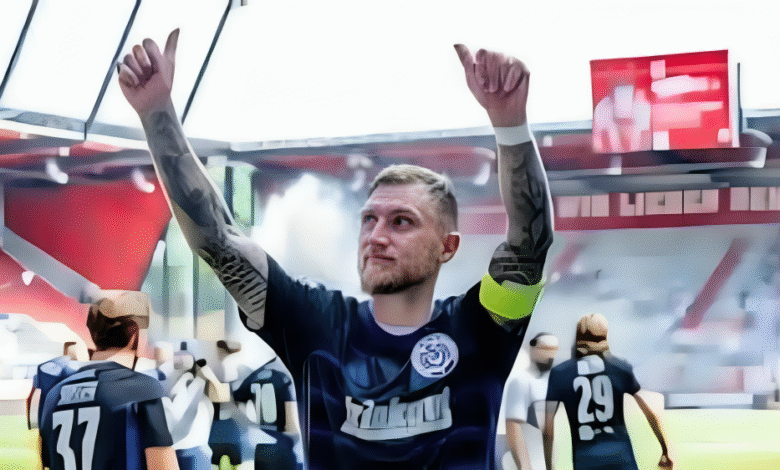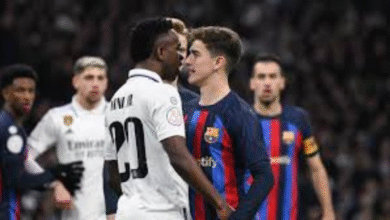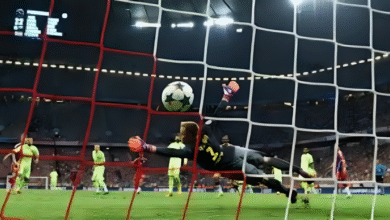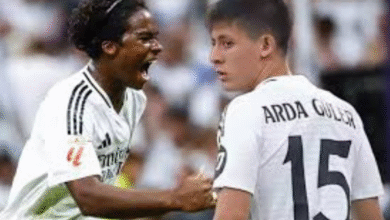Exploring the Thrill of 3. Liga Spiele in German Football

The world of German football is a vibrant tapestry, woven with passion, competition, and a deep-rooted love for the game. At the heart of this landscape lies the 3. Liga, a professional league that serves as the third tier in Germany’s football pyramid. For fans, players, and clubs alike, 3. Liga Spiele represent more than just matches—they’re a celebration of talent, ambition, and the relentless pursuit of glory. Whether you’re a die-hard supporter or a curious newcomer, the 3. Liga offers a unique blend of high-stakes drama and grassroots spirit. In this article, we’ll dive deep into the essence of 3. Liga Spiele, exploring its structure, significance, standout teams, and what makes it a cornerstone of German football culture.
What Is the 3. Liga
The 3. Liga, established in 2008, is Germany’s third-tier professional football league, sitting comfortably between the 2. Bundesliga and the semi-professional Regionalliga. Managed by the German Football Association (DFB), it replaced the Regionalliga as the third division to create a more competitive and marketable platform for clubs. The league’s creation was a game-changer, offering a stepping stone for talented players and ambitious teams aiming for the Bundesliga’s bright lights.
Unlike the top two tiers, which are run by the German Football League (DFL), the 3. Liga’s direct oversight by the DFB gives it a distinct flavor. It’s a league where reserve teams of Bundesliga giants rub shoulders with traditional clubs and plucky newcomers, all vying for promotion or fighting to avoid relegation. The 3. Liga Spiele are the heartbeat of this division, showcasing raw talent and fierce competition every matchday.
Key Features of the 3. Liga
- Structure: The league consists of 20 teams, playing a double round-robin format, resulting in 38 matches per team over a season running from August to May.
- Promotion and Relegation: The top two teams earn automatic promotion to the 2. Bundesliga, while the third-placed team enters a playoff against the 16th-placed 2. Bundesliga side. The bottom four teams are relegated to the Regionalliga.
- Reserve Team Rules: Reserve teams, like Bayern Munich II or Borussia Dortmund II, can compete but are ineligible for promotion to the 2. Bundesliga or DFB-Pokal qualification.
- Economic Impact: In the 2023–24 season, the 3. Liga generated €164.5 million, making it the third-most economically successful sports league in Germany.
The Excitement of 3. Liga Spiele
Every weekend, 3. Liga Spiele light up stadiums across Germany with electrifying action. These matches are more than just games; they’re a showcase of heart, hustle, and hope. Fans flock to see their teams battle it out, whether it’s a nail-biting promotion push or a gritty fight for survival. The 2025–26 season, which kicked off on August 1, 2025, has already delivered unforgettable moments, with teams like MSV Duisburg and Rot-Weiss Essen making early waves.
What sets 3. Liga Spiele apart is their unpredictability. With no single team dominating year after year, the league is a hotbed of surprises. From last-minute winners to high-scoring thrillers, every matchday brings something new. For instance, the 5th matchday of the 2025–26 season saw Rot-Weiss Essen triumph 3:1 over Jahn Regensburg, proving that underdogs can steal the spotlight.
Why Fans Love 3. Liga Spiele
- Affordable Tickets: Compared to the Bundesliga, 3. Liga matches offer budget-friendly prices, making it accessible for families and students.
- Passionate Crowds: Clubs like Dynamo Dresden and 1. FC Kaiserslautern draw over 10,000 fans per game, creating electric atmospheres.
- Local Pride: Many teams represent smaller cities or regions, fostering a deep connection with local communities.
- Emerging Stars: The 3. Liga is a breeding ground for young talent, with players like Marcel Bär, the 2024–25 top scorer with 21 goals, catching the eye of bigger clubs.
Standout Teams in the 2025–26 Season
The 2025–26 season has been a rollercoaster, with 3. Liga Spiele showcasing a mix of seasoned veterans and ambitious newcomers. MSV Duisburg, a promoted side, has been the talk of the town, starting the season with a perfect record of four wins in four games—a historic feat for a newly promoted team. Meanwhile, traditional powerhouses like Dynamo Dresden and Arminia Bielefeld, who secured promotion to the 2. Bundesliga in the 2024–25 season, continue to inspire with their storied legacies.
Notable Performers
- MSV Duisburg: The Zebras have been unstoppable, leading the table after a 2:1 victory over SSV Ulm on Matchday 3. Coach Dietmar Hirsch’s squad has shown grit and flair, with Patrick Sussek emerging as a key player.
- Rot-Weiss Essen: Their 4:3 thriller against Wehen Wiesbaden on Matchday 3 was a fan favorite, highlighting their attacking prowess.
- TSV 1860 Munich: With new signings like Kevin Volland and Florian Niederlechner, the Lions are balancing ambition with the chaos of off-field changes.
- Hansa Rostock: Despite transfer hiccups with Albin Berisha, Rostock remains a fan favorite for their passionate support and competitive spirit.
| Team | Key Strength | Notable Player | 2025–26 Highlight |
|---|---|---|---|
| MSV Duisburg | Defensive solidity | Patrick Sussek | 4 wins in first 4 games |
| Rot-Weiss Essen | Attacking flair | Marcel Bär | 4:3 win vs. Wehen Wiesbaden |
| TSV 1860 Munich | Experienced signings | Kevin Volland | Pushing for promotion |
| Hansa Rostock | Passionate fanbase | Andreas Voglsammer | Competitive despite transfer issues |
The Structure of 3. Liga Spiele
The 3. Liga Spiele follow a well-organized schedule, with fixtures announced well in advance to keep fans in the loop. The 2025–26 season, running from August 1, 2025, to May 16, 2026, was mapped out on July 3, 2025, ensuring clubs and supporters could plan ahead. Each team plays 38 matches, facing every opponent twice—once at home and once away. This double round-robin format ensures a grueling but fair test of endurance and skill.
Matchday Highlights
- Matchday 1: Wehen Wiesbaden took an early lead with a 3:1 win over SSV Ulm, setting the tone for a competitive season.
- Matchday 3: MSV Duisburg’s 2:1 victory over Ulm, capped by a stoppage-time winner, had fans on their feet.
- Matchday 5: Rot-Weiss Essen’s 3:1 win at Jahn Regensburg showcased their ability to compete with the big guns.
- Upcoming Matches (September 13–17, 2025): Key fixtures include Ingolstadt vs. 1. FC Schweinfurt and VfL Osnabrück vs. Hansa Rostock, promising more drama.
The Role of 3. Liga in Player Development
The 3. Liga is more than just a competition; it’s a proving ground for young talent and a second chance for seasoned players. Many stars who’ve graced the Bundesliga, like Kevin Volland, honed their skills in the 3. Liga before making the leap. The league’s competitive nature and high visibility—thanks to broadcasts on ARD, ZDF, and the DFB’s YouTube channel—make it a hotspot for scouts.
Success Stories
- Marcel Bär: The 2024–25 season’s top scorer with 21 goals, Bär’s performances for Rot-Weiss Essen have put him on the radar of 2. Bundesliga clubs.
- Christian Kühlwetter: Now captaining Jahn Regensburg, Kühlwetter’s journey from the 3. Liga to facing Bundesliga sides in the DFB-Pokal is inspiring.
- Patrick Sussek: Duisburg’s breakout star has racked up five scorer points in the first two games of 2025–26, turning heads with his versatility.
Challenges Facing 3. Liga Clubs
While the 3. Liga Spiele are full of excitement, the league isn’t without its hurdles. Clubs often face financial and infrastructural challenges, especially those climbing from the Regionalliga. The DFB’s decision to lower the minimum stadium capacity from 10,001 to 5,001 in the 2023–24 season has helped, but teams like TSV Havelse and VfB Stuttgart II still play in alternate venues due to inadequate home grounds.
Common Challenges
- Financial Struggles: From 2008 to 2013, the 3. Liga operated at a loss, with a peak deficit of €20.9 million in 2012–13. While it turned a €4.9 million profit in 2013–14, financial stability remains a concern for smaller clubs.
- Infrastructure Issues: Clubs like SV Rödinghausen and Berliner AK 07 have opted out of promotion due to stadium limitations.
- Reserve Team Restrictions: Reserve teams add depth to the league but can’t compete for promotion or DFB-Pokal spots, creating an uneven playing field.
The Fan Experience at 3. Liga Spiele
One of the biggest draws of 3. Liga Spiele is the fan experience. Unlike the glitzy Bundesliga, the 3. Liga offers a raw, authentic atmosphere where supporters are the lifeblood of the game. Clubs like 1. FC Kaiserslautern, with their 49,780-capacity stadium, drew a record 48,416 fans for a match against Borussia Dortmund II in the 2024–25 season. The average attendance across the league was 5,612, with a total of over 2 million fans attending last season.
What Makes It Special
- Community Connection: Fans feel a personal stake in their clubs, especially in smaller cities like Cottbus or Duisburg.
- Vibrant Atmospheres: Chants, flags, and standing terraces create an unmatched energy, particularly at clubs like Dynamo Dresden.
- Accessibility: With matches streamed on platforms like Magenta Sport and the DFB’s YouTube channel, fans worldwide can join the action.
The Economic and Cultural Impact
The 3. Liga isn’t just a football league; it’s a cultural and economic powerhouse. With €164.5 million in revenue in 2023–24, it outpaces other German sports leagues like the Deutsche Eishockey Liga (€106.1 million) and Basketball Bundesliga (€90 million). Television rights deals, which increased by 40% since the 2018–19 season, have boosted club budgets, allowing for better facilities and player signings.
Culturally, the 3. Liga embodies the heart of German football. It’s where local heroes are born, and communities rally around their teams. Clubs like FC Rot-Weiß Erfurt, which played in the league uninterrupted from 2008 to 2018, are symbols of regional pride. The 3. Liga Spiele bring people together, fostering a sense of belonging that’s hard to find elsewhere.
Looking Ahead: The Future of 3. Liga Spiele
As the 2025–26 season unfolds, the 3. Liga Spiele promise more thrills and surprises. With teams like MSV Duisburg setting the pace and veterans like TSV 1860 Munich eyeing promotion, the race for the top is wide open. The DFB’s ongoing efforts to improve infrastructure and financial stability will only strengthen the league’s appeal. Whether you’re cheering from the stands or streaming from afar, the 3. Liga is a testament to the enduring magic of football.
In the end, 3. Liga Spiele are more than just matches—they’re stories of triumph, heartbreak, and everything in between. They remind us why we love the beautiful game: it’s unpredictable, it’s passionate, and it’s ours. So, grab your scarf, tune in, and let the 3. Liga Spiele sweep you away into the heart of German football.



